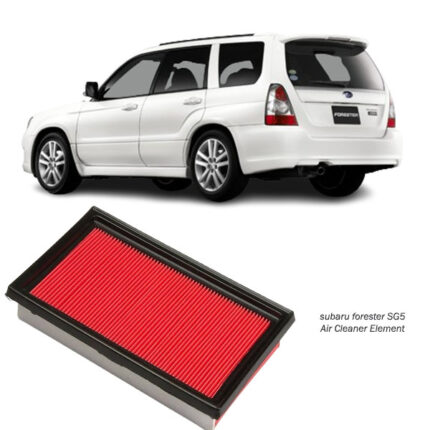-17%
Get Air Cleaner 17220-REJ-W00 Honda
The air cleaner, also known as the air filter, is a vital component of a vehicle’s intake system. Its primary function is to filter out contaminants and particles from the incoming air before it reaches the engine. This ensures that only clean and filtered air enters the engine cylinders for combustion, thereby optimizing engine performance, efficiency, and longevity. This article explores the functions, types, maintenance, and importance of air cleaners in vehicles.
Functions of an Air Cleaner
- Contaminant Removal: The main function of an air cleaner is to remove dust, dirt, pollen, and other debris from the incoming air. These contaminants can cause engine wear, reduce combustion efficiency, and lead to premature component failure if not filtered out.
- Protection for Engine Components: By filtering out contaminants, the air cleaner protects critical engine components such as cylinders, pistons, and valves from abrasive particles. This helps maintain optimal engine performance and extends the lifespan of engine parts.
- Improving Air Quality: Clean air is essential for efficient combustion in the engine. A properly functioning air cleaner ensures that the air-fuel mixture is balanced and that the engine operates smoothly without issues such as rough idling or poor acceleration.
- Fuel Efficiency: Efficient combustion facilitated by a clean air filter contributes to better fuel efficiency. When the engine receives clean air, it can burn fuel more effectively, leading to improved mileage and reduced fuel consumption.
Types of Air Cleaners
- Panel Air Filters: These are flat, rectangular filters made from paper or synthetic materials. Panel air filters are the most common type and are typically located in a plastic housing within the engine compartment. They are cost-effective and easy to replace during routine maintenance.
- Cylindrical Air Filters: Also known as round air filters, these filters are cylindrical in shape and often found in older vehicles or motorcycles. They function similarly to panel filters but have a different physical configuration.
- Foam Air Filters: Foam air filters are made from porous foam material. They offer good filtration efficiency and are commonly used in off-road vehicles and small engines like those in lawnmowers or dirt bikes. Foam filters require regular cleaning and re-oiling to maintain effectiveness.
- Cone Air Filters: Cone filters have a conical shape and are designed to increase airflow compared to standard panel filters. They are often used in performance vehicles or modified engines where increased air intake is desired for higher horsepower output.
Importance of Air Cleaner Maintenance
- Regular Inspection: Periodically inspect the condition of the air filter during routine maintenance checks. Visual inspection can reveal signs of dirt buildup, damage, or clogging that may affect engine performance.
- Timely Replacement: Replace the air filter according to the manufacturer’s recommended intervals or more frequently if driving in dusty or polluted environments. A clogged or dirty air filter can restrict airflow to the engine, reducing performance and fuel efficiency.
- Improved Engine Performance: A clean air filter ensures that the engine receives an adequate supply of clean air for combustion. This promotes smooth acceleration, responsive throttle response, and overall improved engine performance.
- Extended Engine Life: By preventing contaminants from entering the engine, a clean air filter helps reduce wear on critical engine components. This extends the lifespan of the engine and reduces the likelihood of costly repairs.
Air Cleaner Maintenance and Replacement
- Locate the Air Filter Housing: Refer to the vehicle owner’s manual to locate the air filter housing in the engine compartment.
- Remove the Old Air Filter: Depending on the type of air filter housing, you may need to undo clips, screws, or latches to access the air filter. Carefully remove the old filter from the housing, taking note of its orientation.
- Inspect and Clean Housing: Inspect the air filter housing for dirt or debris. Clean the housing using a vacuum or compressed air to remove any loose particles.
- Install New Air Filter: Insert the new air filter into the housing, ensuring it is properly seated and aligned with the housing’s edges. Follow any orientation indicators on the filter or housing.
- Reassemble and Test: Secure the air filter housing cover and fasten any clips or screws. Start the engine and check for proper airflow and engine operation. Ensure there are no air leaks around the filter housing.
Follow us on Facebook for more parts.



